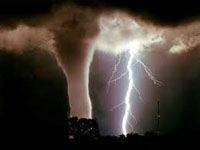If you grew up in the 80's and 90's like me you probably heard a song called the Heat is on. The Heat is on was a huge hit for singer Glen Fry. Fry was co-leader of the American Band the Eagles along with Don Henley until his death. In July 2023 over half of the United States has been battling excessive heat.
In the Southwest part of the United States it is not uncommon for some places to have high temperatures get over 105 degrees. This is due to the hot desert climates. However, even in these areas there has been excessive heat. Some places in the Southwest have hit 120-125 degrees for a daytime high. Places like El Paso TX, Phoenix AZ, Las Vegas NV and others have had several consecutive days over 100 degrees. Next week the heat is expected to expand in the Midwest and High Plains. Places such as Billings Montana could have 100 degree days. Keep in Mind Billings Montana average high is 87 degrees for July. In the Midwest some places may see temperatures up to 110 degrees. The question is what is causing this excessive heat?
If you listen to the politicians they holler climate change. While climate change may play a part in it. It is deeper than just climate change. In fact, the cause is a result of several things. Therefore, I am not going to push an agenda that Climate change is causing this or climate change is not real. I will let people make up their own minds concerning that.
First we have transitioned into an El Nino for the rest of 2023. El Nino is opposite of La Nina. El Nino is causing warming for a lot of countries. In the past three years La Nina impacted the weather. Typically La Nina causes excessive heat in the Eastern part of the US. El Nino is opposite due to warmer than average pacific water temperatures the heat gets transported across the west. This is why El Nino's typically favor above average temps in the Western part of the USA. However, there is more to it than that.
The biggest reason is the Jet Stream. Right now there is a ridge in the West and Central Part of the United States. A ridge allows heat to build up. Sometimes during the summers you can get what we call in meteorology heat bubbles. While temperatures in the Eastern Part of the US have been average to slightly above average it is nothing compared to the other parts of the country. The trade wins are also blowing hot air up into the country too. You have warm air coming up from the southwest and warm air coming up from the Southeast via the Gulf of Mexico. The combination of these things is allowing a super heat bubble.
Usually after a while a ridge will break down due to a shift in the jet stream pattern. But that has not happened. Would be storm systems are going over the ridge and moving southeastward. These storm systems provide thunderstorm activity. Moreover, this is why the Southern Part of the United States has had several rounds of severe weather and flooding rains. The models are not showing anything breaking the ridge anytime soon. Basically, the heat is going to rise and expand even more.
In the Southwest the Monsoon is starting to arrive. The Monsoon is a double edge sword for states like Arizona, New Mexico, parts of Colorado, parts of Utah, and parts of Nevada. While it does supply rain in the American Southwest. It also increases the humidity. Most of the time the heat in the southwest is a dry heat due to dry air. The monsoon will cause higher humidity which increases heat indexes. A few days ago some places had heat indexes up to 130 degrees.
There are lots of variables at play on what is causing the massive heat buildup in half of the United States. This pattern does not appear to be ending anytime soon. As a result several places will see very hot temperatures with high heat indexes. Therefore, the heat will certainly be on for many.
If you grew up in the 80's and 90's like me you probably heard a song called the Heat is on. The Heat is on was a huge hit for singer Glen Fry. Fry was co-leader of the American Band the Eagles along with Don Henley until his death. In July 2023 over half of the United States has been battling excessive heat.
In the Southwest part of the United States it is not uncommon for some places to have high temperatures get over 105 degrees. This is due to the hot desert climates. However, even in these areas there has been excessive heat. Some places in the Southwest have hit 120-125 degrees for a daytime high. Places like El Paso TX, Phoenix AZ, Las Vegas NV and others have had several consecutive days over 100 degrees. Next week the heat is expected to expand in the Midwest and High Plains. Places such as Billings Montana could have 100 degree days. Keep in Mind Billings Montana average high is 87 degrees for July. In the Midwest some places may see temperatures up to 110 degrees. The question is what is causing this excessive heat?
If you listen to the politicians they holler climate change. While climate change may play a part in it. It is deeper than just climate change. In fact, the cause is a result of several things. Therefore, I am not going to push an agenda that Climate change is causing this or climate change is not real. I will let people make up their own minds concerning that.
First we have transitioned into an El Nino for the rest of 2023. El Nino is opposite of La Nina. El Nino is causing warming for a lot of countries. In the past three years La Nina impacted the weather. Typically La Nina causes excessive heat in the Eastern part of the US. El Nino is opposite due to warmer than average pacific water temperatures the heat gets transported across the west. This is why El Nino's typically favor above average temps in the Western part of the USA. However, there is more to it than that.
The biggest reason is the Jet Stream. Right now there is a ridge in the West and Central Part of the United States. A ridge allows heat to build up. Sometimes during the summers you can get what we call in meteorology heat bubbles. While temperatures in the Eastern Part of the US have been average to slightly above average it is nothing compared to the other parts of the country. The trade wins are also blowing hot air up into the country too. You have warm air coming up from the southwest and warm air coming up from the Southeast via the Gulf of Mexico. The combination of these things is allowing a super heat bubble.
Usually after a while a ridge will break down due to a shift in the jet stream pattern. But that has not happened. Would be storm systems are going over the ridge and moving southeastward. These storm systems provide thunderstorm activity. Moreover, this is why the Southern Part of the United States has had several rounds of severe weather and flooding rains. The models are not showing anything breaking the ridge anytime soon. Basically, the heat is going to rise and expand even more.
In the Southwest the Monsoon is starting to arrive. The Monsoon is a double edge sword for states like Arizona, New Mexico, parts of Colorado, parts of Utah, and parts of Nevada. While it does supply rain in the American Southwest. It also increases the humidity. Most of the time the heat in the southwest is a dry heat due to dry air. The monsoon will cause higher humidity which increases heat indexes. A few days ago some places had heat indexes up to 130 degrees.
There are lots of variables at play on what is causing the massive heat buildup in half of the United States. This pattern does not appear to be ending anytime soon. As a result several places will see very hot temperatures with high heat indexes. Therefore, the heat will certainly be on for many.




 Dauntez is Offline
| ID: 1406155 | 44 Words
Dauntez is Offline
| ID: 1406155 | 44 Words
 Dauntez is Offline
Dauntez is Offline
 Dauntez is Offline
| ID: 1406218 | 39 Words
Dauntez is Offline
| ID: 1406218 | 39 Words
 Dauntez is Offline
Dauntez is Offline


 User Notice
User Notice 


